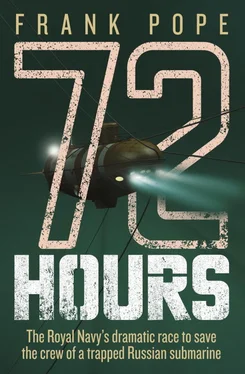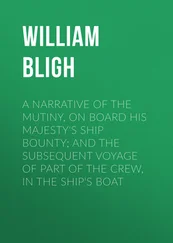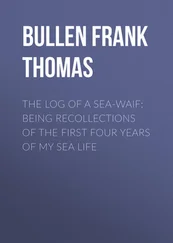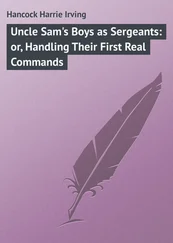On the other side of the thick steel walls of AS-28 , the effect of Scorpio’s handshake was like having woken from a nightmare, and all the crew stirred, some managing to pass weak smiles.
‘I told you they would be here, did I not,’ heaved Lepetyukha. ‘Now calm down. Conserve your energy. We’re not free yet.’
Sunday, 7 August
SS + 67 h 50 mins
00.20 UK – 03.20 Moscow – 12.20 Kamchatka
KIL-27 , Berezovya Bay
As Nuttall guided Scorpio back away from the hull, he squinted into the small monitor that displayed the rear-facing camera, checking no nets had drifted into his path. AS-28 looked like a coffin, lying inert and lashed to the side of the huge cylinder of the array. Although it had none of the barnacles that coated the huge listening device, the Russian submersible didn’t look exactly pristine, with rust-brown scars evident on many of the welds. He nudged Scorpio towards the stern to inspect her propeller. The tufts of fibre he’d noticed early on resolved into what they’d all feared – fishing net. Somehow, either while going into the trap or trying to reverse out of it, AS-28 had fouled its propeller as well.
Apart from the net in the propeller, there was nothing obviously wrapped around AS-28 ’s stern, so Nuttall slowly span Scorpio to face towards the bow. Sliding along close to the hull, he could see what AS-28 ’s crew evidently had not – a spider’s web of lines that now strapped her firmly to the buoyancy tank of the array. There were at least five of them converging on the angle between the Russian bathyscaphe’s fin – or conning tower – and the forward hull.
Before starting to try to cut the lines, they needed to know what they were made of. The first Russian reports had all spoken of steel cables, but the closer the team got with Scorpio’s high-definition lens the more wisps of filament they saw waving in the current. The lines were starting to look more like tightly bunched fishing net than steel. But one of them was different. It was thicker and apparently coated in some kind of rubber.
Keeping a few metres from the port side of the submarine, Scorpio rose above the bunched cables and around the bow. Something didn’t seem quite right. The submersible was held close up against the array and had jammed itself into the nets so tightly that they’d been mistaken them for steel cable, so why had it not recoiled? Was it just friction from the encrustations that was holding it there? Or had other cables snagged it somewhere out of sight? From above they weren’t able to get a good enough angle to peer between the submarine and the steel cylinder. Looking up from below would be their only option, but that’s where Gold drew the line. That was the one place they wouldn’t be checking, he said.
‘If we were positioned on the other side of the array, then maybe,’ he said. ‘But like this we’d have to loop our umbilical over the top of the submarine and put ourselves beneath it. If anything shifted we’d be in trouble, and it’s not worth it.’
With no other rescue service within range in the crew’s estimated survival period, getting Scorpio trapped would be disastrous. What’s more, Scorpio’s thick umbilical cable would have joined the web ensnaring AS-28 .
Positioning problems aside, the jury-rigged, Russian-style positioning system did not seem to be affecting Scorpio too badly, despite the building swell. Nuttall and Forrester were working well together, making sure the umbilical was paid out and heaved in to compensate for the long, slow sway of KIL-27 in the gentle waves. Combined with the water clarity, the conditions were better than on any training scenarios they’d been through. After all the dramas of the journey, it seemed as though everything was going to work out OK. All being well, the cutting operation shouldn’t take more than half an hour, an hour at most, and Podkapayev assured them that the sailors inside AS-28 were still conscious.
They were ready. Gold cleared his throat. ‘Right, let’s get this thing done,’ he said, as Nuttall began repositioning Scorpio alongside the fin, with the vehicle in line with the bunched cables.
Just as Nuttall started moving forward, Podkapayev began talking into his radio to the command ship Alagez , waving his hand signalling Nuttall to stop. The team all looked at him. The interpreter explained that Podkapayev wanted confirmation that they could start cutting. Riches was about to object that now was not the time for time-wasting protocol, when the translator explained that Podkapayev was uncertain as to how buoyant the submarine was.
AS-28 had previously blown their ballast tanks in an effort to get free. If they were still full of air, the submarine would be straining at those cables and when she broke free she might do so at a dangerous angle, only to come crashing back down again. No one seemed to know how long it had been since they were blown, but to Riches’ eyes it seemed it had all seeped out. She didn’t look as though she was tugging upwards, and neither did it look as though she wanted to sink. Every indication was that she was neutrally buoyant.
Gold turned to Riches. ‘We’re wasting time here,’ he said. ‘You can tell that thing’s not going to go anywhere. Look how she’s lying. There’s nothing holding her down at the stern, but she’s not going to sink suddenly or shoot upwards upside down. Maybe she’s slightly positively buoyant, but nothing that’s going to cause a problem.’
Riches nodded, but waited. He was acutely aware of the need not to crash through Russian protocol. Holloway had warned just how fast the curtain could fall on the collaborative operation if they were judged to be out of control. He could feel his jaw clenched tight trying to contain himself while they waited for a reply from the Alagez , who were themselves waiting for a reply from the frozen, half-suffocated sailors. Riches looked at the panel of their own through-water communications system in front of him. Needless to say, NATO and Russia operated on different frequencies, leaving them unable to talk directly to the submersible.
At last Podkapayev’s handheld radio crackled, and he turned to the others and began talking, pointing at the screen.
‘The Priz is not positively buoyant,’ he announced through the interpreter. ‘You must begin by cutting this cable here, and you have permission to begin.’
Gold looked at Riches again, his eyes full of warning. This wasn’t going to last.
The fixed aluminium head of the cutter was slowly nearing the first line, its movements swaying loosely against the backdrop of AS-28 ’s hull. Nuttall was keeping the thrust joystick pushed forward just an inch, but Scorpio was slowing, twisting sideways.
‘Give me another half a wrap there, Will,’ he said. The instruction was picked up by the open microphone and relayed out to Forrester on the umbilical winch. After just a couple of seconds Nuttall felt the resistance ease, and Scorpio moved forward again. As the cable got closer and Nuttall started trying to move it towards the mouth of the cutter, the lack of anything solid in their set-up started to become obvious. The jaws and their target were loosely swaying close together one second then a foot or more apart the next. Scorpio was suspended in mid-water, its umbilical stretched across 250 metres of open sea with a current running, attached to a rolling ship that was being held in position only by a precarious balance of opposing forces. Given that, it was a miracle that the cutter and the cable were only moving around by such a small amount.
Even so, trying to catch the rope in the cutter’s jaws was not going to be easy. The depth perception from binocular vision is removed when using a television monitor, making it difficult to judge whether an object is too close or too far. Some expensive stereoscopic camera systems had been developed and fitted to ROVs to try to combat this problem, but all had an apparently unavoidable drawback: after a few hours at most, the artificial 3-D display gave operators a splitting headache. For a job that often meant sitting in front of screens for up to 12 hours a day, it was a critical fault. Besides, like other long-time ROV pilots, Nuttall’s brain had begun to rewire itself with the sensors available to it. Scorpio had two forward-facing cameras and, although not linked up to function in unison, after spending so many hours using them he’d unconsciously started to interpret their signals as one, giving him rudimentary three-dimensional vision.
Читать дальше












